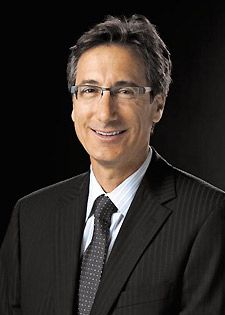The CAD/CAM Chorus: Working out the kinks
January 2011 | Dental Lab Products The CAD/CAM Chorus Working out the kinks Robert Lash – President, Moskey Dental Laboratories by Noah Levine, Senior Editor
January 2011 | Dental Lab Products
The CAD/CAM Chorus
Working out the kinks
Robert Lash – President, Moskey Dental Laboratories
by Noah Levine, Senior Editor
Robert Lash is the third generation of his family to run Moskey Dental Laboratories, and he is well aware that by the time he hands over the reigns, the Cleveland lab, which currently has 28 employees, is likely to look a lot different than the business his grandfather created in 1924.

Lash is just beginning the process of adding in-house digital design and production to his business and he is committed to making the transition a success. He’s already working with Whip Mix and that company’s Vericore production outsourcing service and three months ago added Sensable Technologies’ dental system to bring CAD/CAM processes to his removables department.
“It’s the future, I have no doubt in my mind that that’s where we’re going,” he said. “We have an aging dental technician population with fewer schools to teach the profession, and fewer young people who seem to be interested; I think going digital only makes sense.”
Lash has been keeping track of the development of digital technologies for several years. When he last evaluated Sensable’s system three years ago, the software was not fast enough where it made sense for his lab, but last year when he looked at it again, advancements to the platform, specifically shortcuts that save time when designing removable restorations, made it a fit for his lab.
“We’ve been a partial lab for a long time. We know a lot of this work is going offshore, so we want to be able to do it quicker with digital accuracy, yet retain the artistry that our technicians can provide,” he said. “The haptic device in Sensable’s system is a nice interface for those who are used to waxing by hand.”
Moskey is producing both partial frameworks and crown and bridge restorations with the Sensable system. After about two and a half months, his staff is already taking advantage of the design system’s precision, while still working out some kinks in the casting and investing processes. Still, he is seeing increasing efficiencies with every passing week.
He’s also seen his staff get used to the idea of the digital transition. While not everyone at the lab is 100 percent sold that the technology is the way of the future like Lash is, he’s committed to integrating it successfully and his staff members are no longer living in fear of losing their job to automation.
“Everybody was concerned that their job was going to be replaced by a machine, and I tried to assure them that wasn’t the case. I think they believe that now,” Lash said. “The idea is to be able to produce more with it and hire more people. It’s just another technician, so to speak.”
The results are already speaking for themselves. Even while they are still getting used to waxing in virtual space and the nuances of the software, Lash said the fit of CAD/CAM-produced restorations is better than what the lab was producing when everything was done by hand.
In fact, the biggest growing pains have been less about using the new technology for case design, and more about adjusting casting and investing processes to work with the printed resin parts produced by the system. They’ve even realized an unexpected benefit to Sensable’s openness by discovering how they can output from the design station they’d been using for Vericore restorations to the 3D Systems printer that is part of their Sensable system.
“That’s provided an opportunity for us to get more done. It gives us two design centers,” he said.
He expects to get even more productivity out of the system as his staff grows more comfortable working in the CAD/CAM environment and is excited about what having the technology will mean for his removables department.
While he’s looking forward to an ever more digital workflow that may eventually start with digital impressions sent directly from an operatory, Lash said he tries to remain open-minded about the future. He can remember when implants were making their way into the industry, and people were saying they would eliminate the need for dentures. Of course now he not only has plenty of denture work coming through his lab, many of those cases are implant supported. To him that’s a perfect example of why it’s important for his lab to keep up with technology, but also to stay flexible in its approach to the future of the industry.
“It may look like one thing, but it turns into another,” he said.